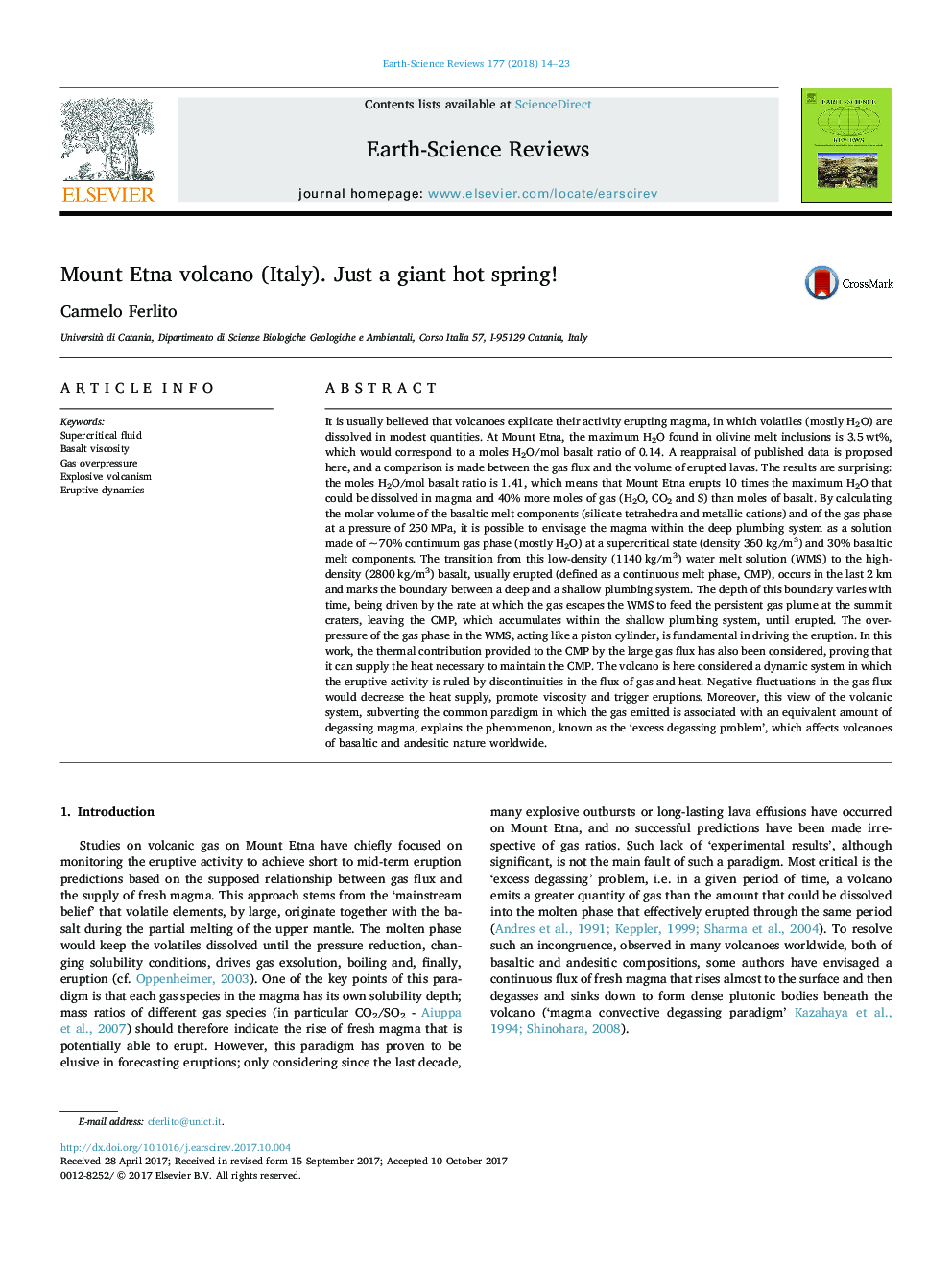| کد مقاله | کد نشریه | سال انتشار | مقاله انگلیسی | نسخه تمام متن |
|---|---|---|---|---|
| 8913022 | 1639925 | 2018 | 10 صفحه PDF | دانلود رایگان |
عنوان انگلیسی مقاله ISI
Mount Etna volcano (Italy). Just a giant hot spring!
ترجمه فارسی عنوان
آتشفشان کوه اتنا (ایتالیا). فقط یک جوجه گرم!
دانلود مقاله + سفارش ترجمه
دانلود مقاله ISI انگلیسی
رایگان برای ایرانیان
کلمات کلیدی
مایع فوق بحرانی، ویسکوزیته بازالت بیش از حد گاز، آتشفشان انفجاری، پویایی فیزیکی،
موضوعات مرتبط
مهندسی و علوم پایه
علوم زمین و سیارات
زمین شناسی
چکیده انگلیسی
It is usually believed that volcanoes explicate their activity erupting magma, in which volatiles (mostly H2O) are dissolved in modest quantities. At Mount Etna, the maximum H2O found in olivine melt inclusions is 3.5Â wt%, which would correspond to a moles H2O/mol basalt ratio of 0.14. A reappraisal of published data is proposed here, and a comparison is made between the gas flux and the volume of erupted lavas. The results are surprising: the moles H2O/mol basalt ratio is 1.41, which means that Mount Etna erupts 10 times the maximum H2O that could be dissolved in magma and 40% more moles of gas (H2O, CO2 and S) than moles of basalt. By calculating the molar volume of the basaltic melt components (silicate tetrahedra and metallic cations) and of the gas phase at a pressure of 250Â MPa, it is possible to envisage the magma within the deep plumbing system as a solution made of ~Â 70% continuum gas phase (mostly H2O) at a supercritical state (density 360Â kg/m3) and 30% basaltic melt components. The transition from this low-density (1140Â kg/m3) water melt solution (WMS) to the high-density (2800Â kg/m3) basalt, usually erupted (defined as a continuous melt phase, CMP), occurs in the last 2Â km and marks the boundary between a deep and a shallow plumbing system. The depth of this boundary varies with time, being driven by the rate at which the gas escapes the WMS to feed the persistent gas plume at the summit craters, leaving the CMP, which accumulates within the shallow plumbing system, until erupted. The overpressure of the gas phase in the WMS, acting like a piston cylinder, is fundamental in driving the eruption. In this work, the thermal contribution provided to the CMP by the large gas flux has also been considered, proving that it can supply the heat necessary to maintain the CMP. The volcano is here considered a dynamic system in which the eruptive activity is ruled by discontinuities in the flux of gas and heat. Negative fluctuations in the gas flux would decrease the heat supply, promote viscosity and trigger eruptions. Moreover, this view of the volcanic system, subverting the common paradigm in which the gas emitted is associated with an equivalent amount of degassing magma, explains the phenomenon, known as the 'excess degassing problem', which affects volcanoes of basaltic and andesitic nature worldwide.
ناشر
Database: Elsevier - ScienceDirect (ساینس دایرکت)
Journal: Earth-Science Reviews - Volume 177, February 2018, Pages 14-23
Journal: Earth-Science Reviews - Volume 177, February 2018, Pages 14-23
نویسندگان
Carmelo Ferlito,
